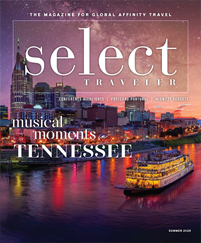Explorers of all types find their way to St. Charles, Missouri. Frontiersman Daniel Boone left Kentucky in 1799 to help his son Nathan build a home here on 680 acres of wilderness when St. Charles numbered 400 residents.
Five years later, Capt. Meriwether Lewis told William Clark to meet him in this small river town with 40 other men to launch their exploration of the Louisiana Purchase for President Thomas Jefferson. Beginning on May 19, 1804, they followed the Missouri River westward on their epic two-year expedition, one day after the city threw a dance for them that is still talked about.
Today, bicyclists from many states gather in St. Charles just off its National Historic Landmark Main Street to embark from the Bike Stop Café on weeklong expeditions of their own. They come for the Katy Trail, a 240-mile-long scenic corridor that meanders through the Missouri countryside and offers food and lodging along the way in bed-and-breakfasts, restaurants and pubs.
Hub for Groups
For most groups, the story of St. Charles begins with its magnificently preserved Main Street. Dozens of local establishments with colorful names like the Boone’s Lick Trail Inn and the Mother-in-Law House Restaurant occupy its pristine 200-year-old structures. Every building has a story, and free trolley car tours identify highlights for visitors.
I arrived in July for lunch with Greg Maxon, the St. Charles CVB’s group travel sales manager, at Hendricks BBQ, where we discussed the types of groups that are coming for Main Street and more.
“We’re popular for three types of trips,” he said. “We’re used a lot as a hub-and-spoke city for regional trips that might include St. Louis, Hannibal and other parts of northern Missouri. We’re also a stopping point for groups on their way to places like Branson [Missouri] or Paducah, Kentucky. And we’re a destination for day trips from nearby cities in Missouri and Illinois.”
A roster of special events capitalizes on St. Charles’ period architecture and has been cultivated throughout the years. It’s easy to imagine a Dickens Christmas on its bumpy brick streets.
“Christmas Traditions goes on for about five weeks,” said Maxon. “From Thanksgiving to Christmas Eve, we have thousands of people come to enjoy old-fashioned activities and characters. Jack Frost, Sugar Plum Fairy, Scrooge, Tiny Tim and others interact with guests, and merchants throw open their doors. It’s an authentic holiday gathering.”
“As popular as that festival is, we’re hearing that Halloween is becoming more popular with travelers than Christmas,” said Maxon. “So, we started an October event called Legends and Lanterns. We have spooky characters roaming through town and all the seasonal foods and treats you can imagine. It’s bringing an added dimension to our fall visitation.”
Iconic Expedition
Maxon took me over to the Lewis and Clark Boat House and Museum, an interpretive facility built on pilings sunk 600 feet into the riverbank to withstand Missouri River floods. It overlooks the site from which the expedition was launched.
Local river authority Bill Brecht walked me through the museum and discussed its dioramas, replica boats and journal entries by Lewis and the wilderness conditions encountered by the Corps of Discovery.
“Thomas Jefferson sent his friend Meriwether Lewis to lead it,” said Brecht. “They gathered 42 to 45 men to go with them. They were to explore the Louisiana Territory and find the source of the Missouri while seeking an all-water route to the Pacific Ocean.
“This is where they met up,” said Brecht. “Lewis was the commander, and Clark was his equal as lieutenant. They arrived on May 16. The town held a big dance for them the night before they left, and two crewmen were almost left behind for causing trouble.”
I asked Brecht how the two men differed.
“Lewis was detail oriented,” he said. “His journals and mapping abilities were remarkable. Clark had people skills. He was the one who managed the crew and the Native Americans who went along.”









